In a horticultural career spanning 30 years, Jane Moore has been a head gardener at a Benedictine abbey, a BBC researcher, a presenter on BBC Gardeners’ World and an acclaimed writer for numerous gardening publications. She is currently Group Head Gardener for several swish Andrew Brownsword hotels and has somehow found time to write Planting for Butterflies, a rather excellent book about our favourite* winged garden visitors.
On sunny days she can be found flitting between plants at The Bath Priory, so armed with a massive net and human-sized jam-jar, we headed out to snare some top butterfly facts and tips..
+-+-+-+-+-+-+-+-+-+-+-+-+-+-+-
We’ve heard reports that butterflies have been emerging from their winter slumber earlier this year. Have you noticed this in the gardens that you manage?
So far, it’s turning into a good year for butterflies. I’ve seen more of the early season ones like Orange Tips and Brimstones than I have for several years. At the moment the meadow at The Bath Priory Hotel where I work is alive with Meadow Brown butterflies as well as some of the spectacular day flying moths such as Garden Tiger moth and Six Spot Burnet moth. I’ve already seen a couple of freshly hatched Red Admirals too.
What’s the best way to ID a butterfly? They never seem to stay still for long enough…
I know! It’s very frustrating! My other half always accuses me of ruining many a good walk by stopping all the time to scrutinise fluttering things in hedgerows. There are a few things that you can use to help identify the little blighters. The food plants they’re fluttering around, and general location are a great help. For example, the Gatekeeper really does like gateways in fields and hedgerows, Meadow Browns like meadows and grassland. Blues are quite difficult, but garden blues are nearly always Holly Blue, but I often see the Common Blue on the meadow at the hotel as they like grassland. The other thing is to learn what the underside of the wing looks like as well as the upper wing as butterflies have an annoying habit of feeding with their wings closed. The underside is often more camouflaged than the colourful upper wings, but the combination of colour, underside and location should nail it.
Is there a certain time of day that is best for butterfly spotting?
Prime daytime is when they’re most active. Weather conditions have more of a bearing as butterflies like the still, warm, calm days of spring and summer and won’t tend to fly if it’s wet and windy.
What makes a butterfly a butterfly and a moth a moth?
Ah now that’s a tricky one. As a rule, moths fly at night and butterflies during the day. There are day flying moths too but not many. Also, butterflies have delicate antennae with a sort of bulb or club at the end, whereas moths often have furry antennae. In fact moths are generally more furry and have more camouflage colours than butterflies.
What would be your top three plants for butterfly attraction?
Buddleia is the obvious choice – it pulls in all the flamboyant butterflies of high summer such as Peacock, Red Admiral and Small Tortoiseshell. I’m a great fan of Asters too as they’re such good garden plants – as long as you steer clear of the mildew prone New York asters and pick varieties with single flowers, so the nectar is on show. After that I like the herbs such as Lavender and Marjoram as they’re great for bees as well as butterflies and are incredibly useful as well as attractive.
And what would be your favourite butterfly? (We’re guessing the Cabbage White is pretty low down on your list.)
I’ve gone from a love/hate affair with Cabbage Whites to more of a ‘aw shucks I rather like you’ in the past few years. That’s partly because there have been less of them around due to a parasite, I think, but also because they do make such a picture fluttering over the lavender in summer. Also, I don’t grow as many cabbages as I used to!
My favourite butterfly has to be the Orange Tip, one of the first butterflies you tend to see in spring and early summer. I grow Hesperis or Sweet Rocket specially for them, well and for me too as I love it in the garden because it keeps on flowering its socks off. You have to be a bit careful with the Orange Tip though, as the males are the ones with the colourful wings and the females are plain white and look suspiciously like the Small White butterfly. Timing is the key here as the Orange Tips are way earlier than the Whites.
Help! My buddleia has taken over the garden! How can I tame it?
This is why all gardeners develop a ruthless pruning streak after a few years. You need a good pair of loppers, perhaps even a pruning saw and a strong sense of empowerment. Whatever you do to it in spring, it will come back, believe me.
After a hard day of butterfly spotting, what drink would you reach for?
You two made me a gin and cucumber cooler a year or two ago and that was perfect for a hot day. Left to my own devices, it’s a classic mojito every time.
+-+-+-+-+-+-+-+-+-+-+-+-+-+-+-
Planting for Butterflies:
The Grower’s Guide to Creating a Flutter is available now.
Published by Quadrille Publishing, £12.00
+-+-+-+-+-+-+-+-+-+-+-+-+-+-+-
*Maybe second favourite, behind birds. Certainly ahead of wasps and gnats.


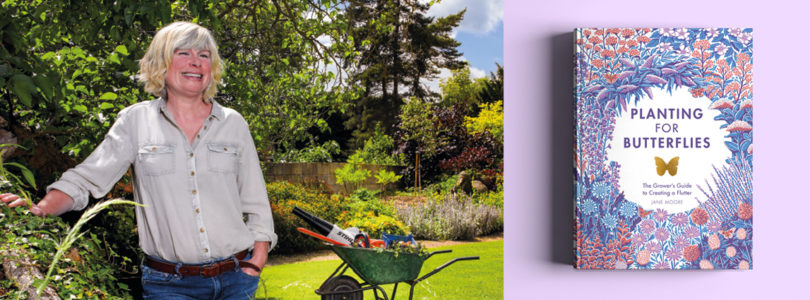
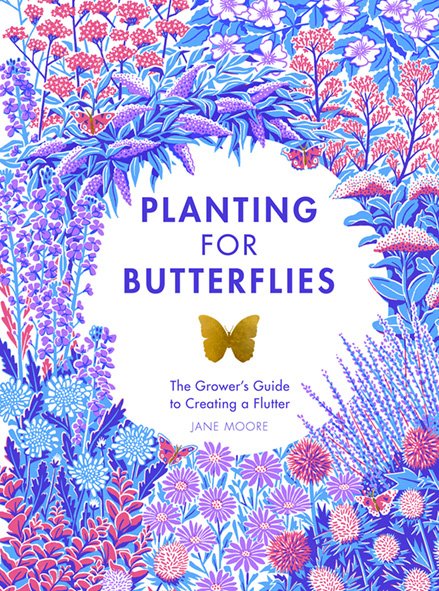

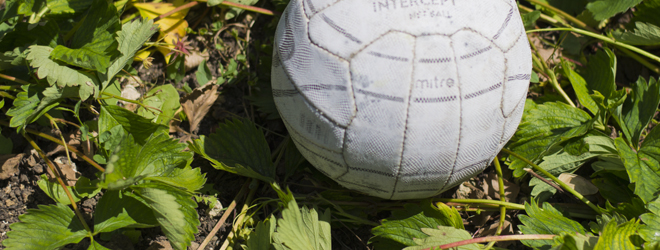
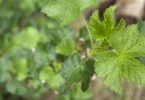

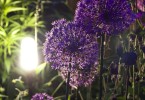

[…] celebration of the launch of Planting for Butterflies – a book written by our pal Jane Moore – we’ve been unravelling our disturbingly long proboscises into this tasty, vodka-based […]
Thanks for sharing this informative interview with Jane Moore. I’d love to read more such interviews on organic gardening too.